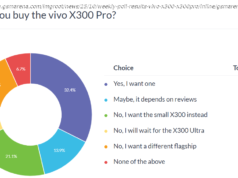Apple’s latest software update for the iPhone, iOS 11.3, lets you monitor your own health and the health of your phone’s battery.
Apple has released the highly anticipated software update for the iPhone that promises to give you greater visibility into your own health—as well as the health of what could be a failing handset battery.
You can fetch the free update– iOS 11.3–on your phone, by tapping SettingsàGeneralàSoftware Update on the device.
Among the fresh features, this latest version of iOS brings new augmented reality capabilities, a chat function within the Messages app that will let you communicate directly with a business (e.g, Home Depot, Marriott) and—for those of you who have the iPhone X–four new “animoji” characters (lion, bear, dragon or skull).
For now, though, let me highlight the two distinct features that many of you in particular have been waiting for, including one that will prevent Apple from throttling your phone when the battery has turned into a weakling.
When Apple issued an apology late last year for slowing down iPhones with older batteries, the company not only said it would drop the price of out-of-warranty replacement batteries to $29 from $79 but would also through this 11.3 update, let you monitor the health of your battery, and also turn off a feature that would let Apple intentionally slow down your phone.
To take advantage of the feature, start in Settings, tap Battery and then tap Battery Health, which you’ll notice is still in beta.
You’ll see a measure of your battery’s capacity relative to when it was new, expressed as a percentage. You’ll also be able to tell within the settings if Apple’s “performance management” battery feature —that’s the fancy way of saying Apple could dynamically throttle your phone — is turned on. If so, you’ll see an option to turn it off. Keep in mind that this feature would only kick in if your device unexpectedly crashed on a handset with a weakened battery. In other words, there’s no option to turn off a feature that hasn’t even been turned on.
If your phone battery is in this reduced state, you’ll get a message to that effect and a note that performance has been applied to help prevent this from happening again. Should that message appear, you can tap “Disable” to do just that, though Apple recommends you do not take this path, lest the phone be prone to more repeated crashes. It’s also worth noting that once disabled, you cannot manually turn this power management function back on unless the phone were to subsequently crash again, which would automatically re-enable the feature.
Incidentally, If you have the newer iPhone 8,8 Plus or X models, a more advanced power management system is in place, which, Apple says, “more precisely allows iOS to anticipate and avoid an unexpected shutdown,” resulting in a “less noticeable” impact on performance.
Chasing down medical records may be enough to give you a migraine. The iOS 11.3 software helps you tackle the disparate medical-records epidemic via an update to the Health Records section within the Health app. The idea is to let you easily view all of your relevant medical records in one place, the iPhone (or iPod Touch), being that place.
Navigate to the Health Records section of the Health app by tapping the Health Data icon at the bottom of the screen.
After tapping Get Started, you can either search for a medical provider by hospital name, network or location, or choose from the provider list Apple surfaces. If you’re a patient for example of NYU Langone Health, Stanford Medicine or nearly 40 other health systems representing hundreds of hospitals and clinics, you’ll be able to view your medical records right from their iPhone.
Tap the institution to select it. You’ll have to sign in with your user ID and password for that institution, the same credentials you’d use for that hospital’s patient portal. The promise is that having done so once, you won’t have to enter your credentials again. Apple says that by default, the improved Health app will automatically look for updated medical records on a weekly basis, though you’ll be able to check more frequently, or get notifications when new data arrives. Such notifications won’t reveal any private data. You’ll have to open the app to view the numbers. In some cases, though, your doctor may withhold submitting certain records, at least until he or she gets a chance to go over the results with you.
Apple says that the health records data, which is encrypted, goes directly from the medical provider to your phone–it doesn’t reside on Apple’s own servers, thus protecting your privacy.
Email: ebaig@usatoday.com; Follow USA TODAY Personal Tech Columnist @edbaig on Twitter






